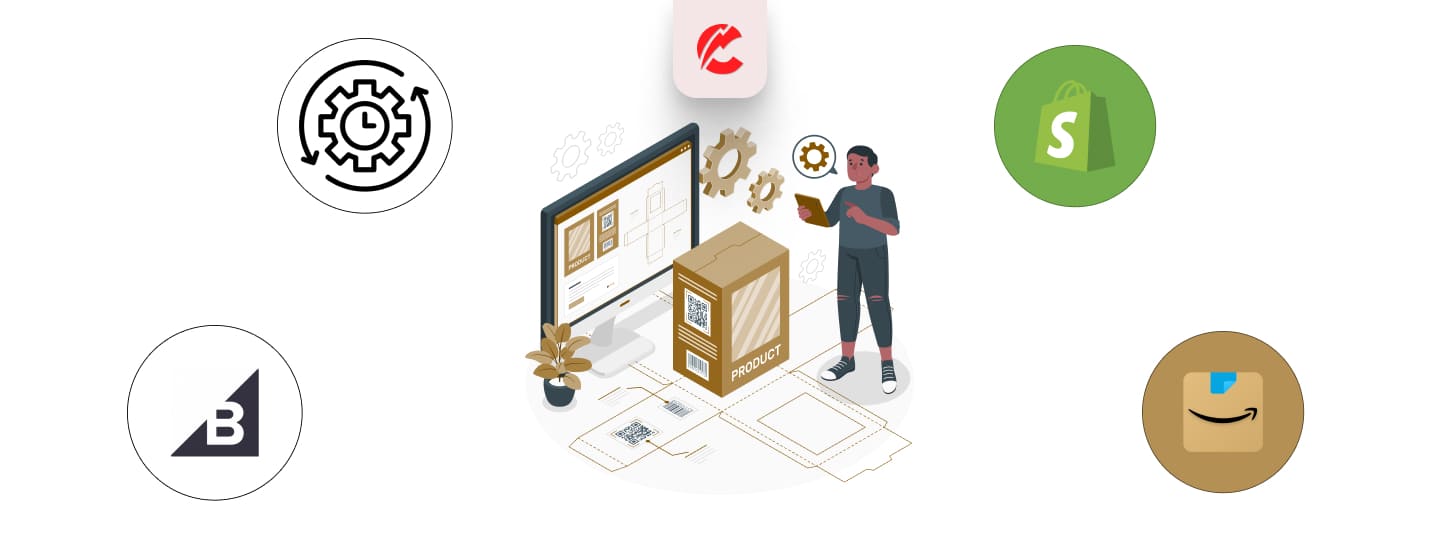Managing product data across multiple eCommerce platforms like Amazon, Shopify, and BigCommerce can be challenging. A Product Information Management (PIM) system offers a centralized solution to streamline operations, maintain consistency, and enhance scalability. By automating and organizing product data, PIM systems empower businesses to grow efficiently and ensure a seamless customer experience across all platforms.
Here’s how using a PIM system can optimize your multi-store strategy and drive success.
What is a PIM System?
A Product Information Management (PIM) system acts as a single source of truth for all product-related information. It enables businesses to centralize data such as descriptions, pricing, images, and specifications, ensuring accuracy and consistency across multiple channels.
Why Use PIM Across Amazon, Shopify, and BigCommerce?
1. Centralized Data Management
Maintain all product information in one platform, reducing manual errors and duplication efforts.
2. Consistent Branding
Ensure uniform product details, such as descriptions and visuals, across all platforms to establish trust and professionalism.
3. Faster Product Launches
Simultaneously launch new products across Amazon, Shopify, and BigCommerce by automating data distribution.
4. Error Reduction
Reduce the risk of mismatched pricing or incomplete product information with automated validation.
5. Enhanced Scalability
Easily handle a large number of SKUs and expand to new platforms or regions without additional complexity.
How PIM Optimizes Multi-Platform Management
1. Integration with eCommerce Platforms
Connect your PIM system to Amazon, Shopify, and BigCommerce for seamless data synchronization.
2. Custom Data Formats
Tailor product information to meet the specific requirements of each platform, such as Shopify’s SEO metadata or Amazon’s enhanced content features.
3. Automated Updates
Push updates like pricing changes or inventory adjustments across all channels in real time.
4. Localized Product Information
Adapt descriptions, pricing, and specifications for international markets, supporting multi-language and multi-currency operations.
5. Data Analytics
Gain insights into product performance across platforms to identify trends and optimize listings.
Use Cases for PIM Across Platforms
1. Multi-Channel Sellers
Maintain consistent and enriched product information across Amazon, Shopify, BigCommerce, and other sales channels.
2. Seasonal Promotions
Quickly update promotional details like prices, descriptions, and images across all platforms during peak seasons.
3. Large Product Catalogs
Easily manage a large volume of SKUs, ensuring accurate and comprehensive product data across platforms.
4. Global Expansion
Simplify the launch of localized product listings tailored to different regions and languages.
Benefits of PIM for eCommerce Businesses
1. Improved Efficiency
Automate repetitive tasks like data uploads and updates, saving time and reducing errors.
2. Enhanced Customer Experience
Deliver accurate and detailed product information to customers, building trust and increasing satisfaction.
3. Faster Go-to-Market Strategy
Bring new products to market quickly and efficiently with centralized management.
4. Data Accuracy Across Channels
Ensure product details are consistent and error-free across all platforms.
5. Scalability
Support business growth by managing more SKUs and adding new channels with ease.
How We Can Help
Our team specializes in integrating PIM systems to help businesses efficiently manage their product data across Amazon, Shopify, and BigCommerce. We assist with:
- Seamless integration of PIM systems with your existing platforms.
- Customizing workflows for platform-specific requirements.
- Automating product updates and monitoring performance.
- Ensuring scalability for future growth.
Conclusion
Using a PIM system to manage product information across Amazon, Shopify, and BigCommerce can transform how you operate. By centralizing and automating processes, businesses can save time, reduce errors, and scale efficiently.
Ready to take control of your multi-platform product management? Let’s get started!


